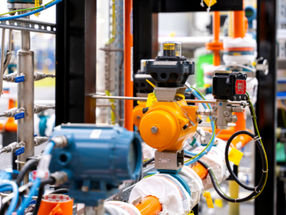Recovering Construction and Automotive Industries Driving Global Demand for Soda Ash
Advertisement
Driven by increased demand in the recovering construction and automotive industries, global demand for soda ash (sodium carbonate, Na2CO3) - an important industrial chemical essential for the production of flat glass, container glass, detergents and other chemicals - will increase nearly 34 percent during the next decade. This according to a report from IHS Inc. Despite the demand increase, however, the soda ash industry is on the cusp of major structural change, the IHS report finds
“The global soda ash market is undergoing significant change since naturally produced soda ash is now overtaking market supply and synthetically produced capacity, except in China and India, is declining,” said Marguerite Morrin, director of the Global Soda Ash Service at IHS Chemical. “There has been an influx of new supply of natural soda ash from Turkey, which is both cost-competitive and more sustainable than synthetic production. As a result of this cheaper supply, more costly synthetic supply from high-cost producers, particularly in Europe, is being threatened, shut down or idled.”
According to the report, The 2014 IHS Chemical Soda Ash Analysis, global annual consumption of soda ash accounts for more than 55 million metric tons (MMT) and it is expected to increase to almost 73 MMT by 2023, reflecting a nearly 34 percent increase in volume. The global average annual demand is expected to grow by 2.9 percent over a next decade, but with large regional differences. China, the world’s largest soda ash producer since 2003, will contribute the biggest increase in demand - 5 percent year-on-year growth to 2023 (driven by construction), followed by India.
Glass, accounting for more than half of the global demand, is the dominant end-use for soda ash, with 26 percent of soda ash demand for flat glass production. Flat glass will lead world demand growth for soda ash and, according to the IHS study, the proportion of soda ash used in flat glass will rise over time as new flat glass capacity is installed around the world.
By 2023, the study forecasts that flat glass will consume as much as 30 percent of the world soda ash demand. Since 2000, production of flat glass in China has grown 12 percent on an annual basis. China now assumes half of flat glass production globally.
“China, as a major producer and consumer of soda ash will remain an important and, to some extent, elusive determinant of the health of the global soda ash market,” Morrin said. “But the Chinese market faces some challenges, which are not only related to lower than expected demand growth, but also to high production costs.”
In 2013, demand for soda ash was weak in China, and despite a huge domestic overcapacity, high costs have prevented local producers from being able to significantly gain market share in export markets. In the last six years, China has averaged about 15 percent of the soda ash traded globally.
Sustainability is yet another factor that drives soda ash demand as flat glass plays an increasing role in energy efficiency. However, environmental costs associated with the soda ash production increase their importance in the play.
Soda ash world capacity is divided between synthetic and natural processes. These two types accounted for 75 percent and 25 percent of the total, respectively, in 2013. The leading synthetic production process is the Solvay, or ammonia-soda method. This process is exclusively deployed in Europe, where it is used to produce 10 MMT of soda ash annually. Trona is the most common mineral mined to produce natural soda ash, which costs less than synthetic production, but in commercial quantities is geographically restricted. The world’s largest deposits of trona are based in the Green River Basin in Wyoming, with proven reserves capable of supplying demand for more than 3,500 years.
Turkish Eti Soda began its production in 2009 and plans to produce 4 MMT annually by 2019. The two well-characterized deposits of low-cost trona in Turkey are at Beypazari and Kazan, which hold proven reserves of about 40 years at world-scale production rates.
“Eti Soda is expected to be disruptive during the next five years, particularly for the well-established European chemical industry,” Morrin said. “It’s clear that the new low-cost Turkish supply with a competitive cost base and low transport costs relative to the U.S. producers will continue to influence the market. We just do not know yet to which extent.
“The Eti Soda supply,” she said, “has several advantages, such as excellent logistics for transporting Turkish soda ash to European markets and it is conveniently located near markets in North Africa and the Indian Subcontinent.”
In recent years the gap between natural and synthetic soda ash costs has widened putting pressure on synthetic plants which were subsequently closed including plants in South Korea, Australia, Brazil and Japan, while South America and Asia, excluding China, became important export destinations for U.S. soda ash. Closures in West Europe have also meant that this region has become increasingly reliant on imports.
Since 2009, the reduction of capacity from synthetic soda ash totaled 2.4 (MMT).
“Synthetic soda ash producers are likely apprehensive about the further Turkish natural soda ash production developments as its increasing cost competitiveness poses a threat to the industry, particularly in valuable short-haul markets such as Europe,” Morrin said.





























































